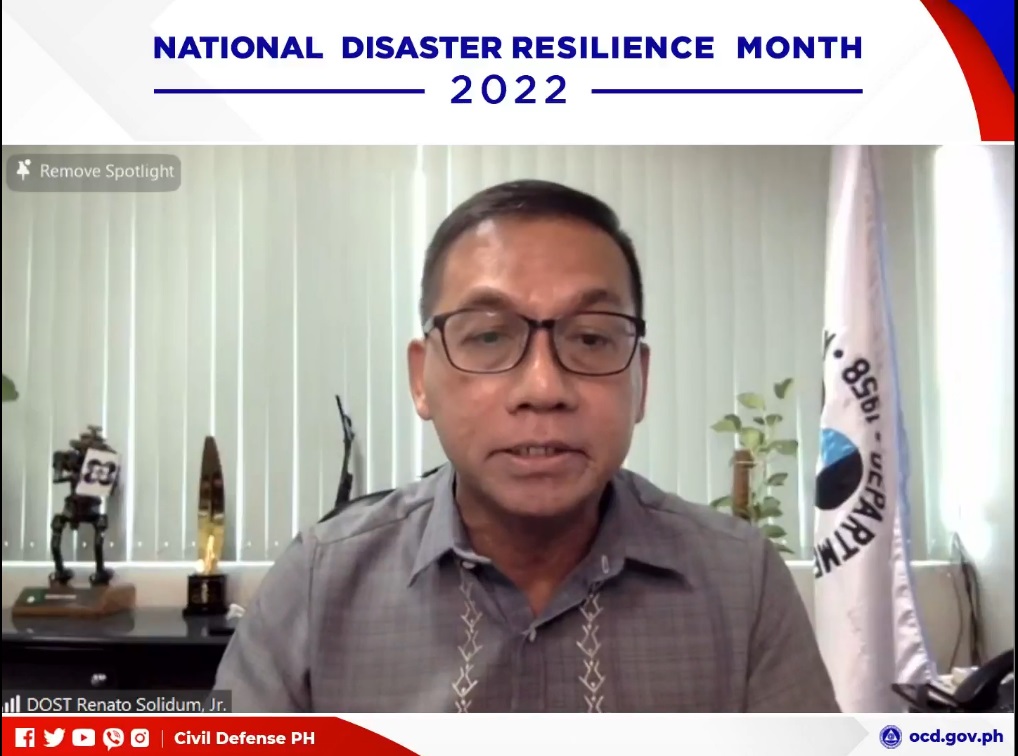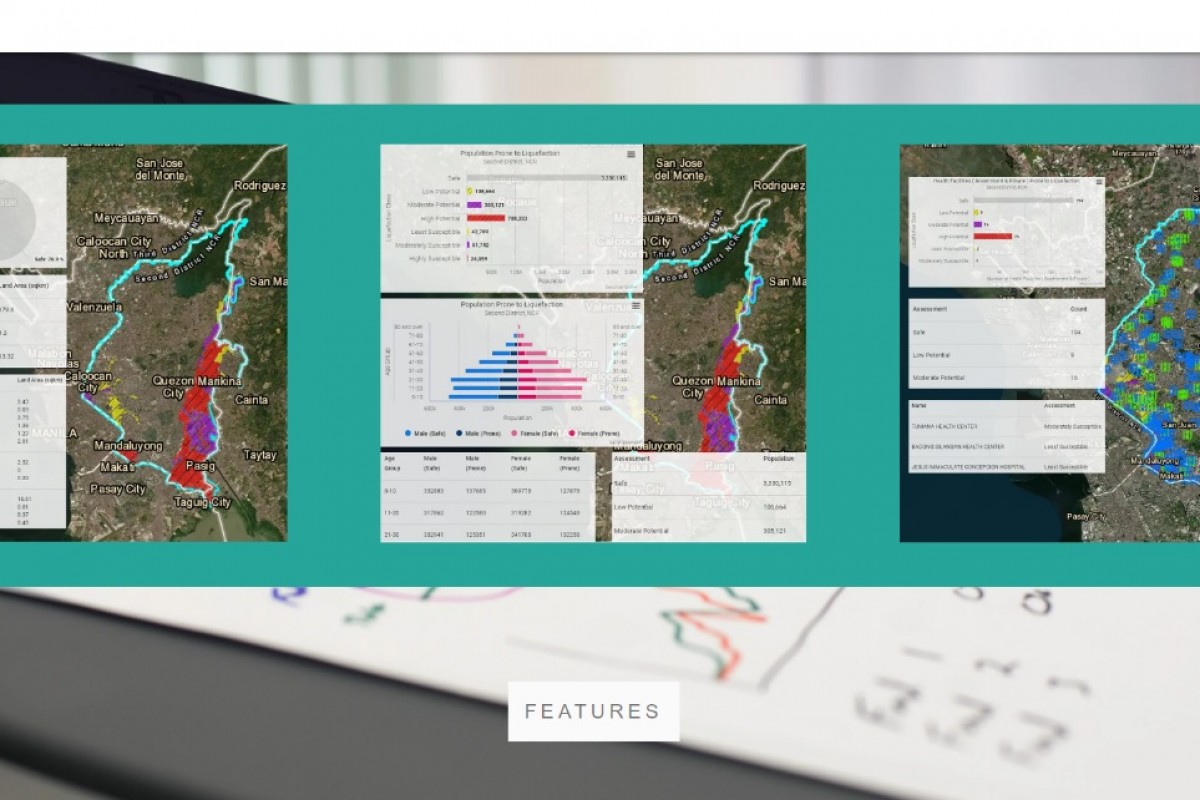QUEZON CITY -- The Department of Science and Technology has, for so many years, never wavered in its mission to provide science-based solutions to the country’s problems related to natural hazards like typhoons and earthquakes, to name a few.
On the occasion of the observance of the 2022 National Disaster Resilience Month (NDRM), Undersecretary Renato U. Solidum Jr. shared on 07 July 2022 that the Department of Science and Technology (DOST) has always focused on strengthening the disaster risk reduction and mitigation programs of its two frontline agencies, namely the Philippine Atmospheric, Geophysical and Astronomical Services Administration (PAGASA) and the Philippine Institute of Volcanology and Seismology (PHIVOLCS).
“Science and technology have the power to save lives and livelihoods, and we must use them,” said Usec. Solidum during the webinar on disaster prevention and mitigation which is part of the observance of the 2022 NDRM.
Usec. Solidum pointed out that the country’s long-term vision is to build a society where families thrive in vibrant, culturally, diverse, and resilient communities.
“Gusto natin ng matatag, maginhawa, at panatag na buhay. But the most often asked question is how can we achieve this? If the country periodically suffers from the impacts of disaster. This is where prevention and mitigation come in,” added Usec. Solidum.
He also emphasized that disasters are preventable by understanding the risks and anticipating future scenarios so that people can avoid and mitigate the negative impact by building local capacity and producing research-based products and systems.

In highlighting that science is useful, usable, and used when it comes to disaster risk reduction and mitigation, Usec. Solidum referred to the different projects spearheaded by the DOST like the Dynaslope project, GeoRisk PH, Hybrid Electric Road Train, and Project SARAI.
He said that the Dynaslope project reduces landslide risk in communities with a community-based early-warning system. The landslide sensors installed in strategic locations detect movements even before the hazard is visually manifested and the rain gauge measures the amount of rainfall in the area.
The next one is GeoRisk Philippines which serves as a source of information for accurate and efficient hazard and risk assessment. Through this innovation, the public is informed about the hazards and what the hazards can do so that the communities can prepare and implement mitigating strategies.
Meanwhile, in the past five years, Usec. Solidum said that DOST has been supported by Project SARAI or Smarter Approaches to Reinvigorate Agriculture as An Industry in the Philippines. It aims to reduce climate risks by providing agricultural stakeholders with site-specific crop advisories using advanced technology.
“Project SARAI’s advisories focus on integrating local weather data and crowd forecast with farm management activity, specifically nutrient and water management and proactive and disease monitoring,” said Usec. Solidum.
He also shared that DOST is pushing for the use of the electric vehicle as a way to cut greenhouse gas emissions, carbon footprint, and to reduce the production and operational cost in the transportation sector. The DOST-Metals Industry Research and Development Center built the Hybrid Electric Road Train and Hybrid Electric Train which are made from locally available materials designed and made by Filipino engineers.
“So, what do these innovations have in common? These are technologies developed through rigorous scientific research. They are evidence of why resilience building cuts across sectors. The community is the heart of the innovations but they are also the co-owners and co-implementers,” said Usec. Solidum.
Usec. Solidum, sometimes referred to as the ‘fault finder’ [for being a geologist], further said that prevention and mitigation can be demonstrated through the installation and use of warning systems, use of risk assessment, smart land use planning, effective city design, establishing lifelines and disaster-proof houses, prioritization of greening programs and agriculture, and increase in resilient livelihood activities. He added that it might be expensive but it is cost-effective in the long run.
The National Disaster Risk Reduction Management Council (NDRRMC), through the Office of Civil Defense, leads the month-long observance of "National Disaster Resilience Month” that runs from July 1 to 29, 2022 with this year’s theme: 'Sambayanang Pilipino, nagkakaisa tungo sa katatagan at maunlad na kinabukasan' which seeks to advocate unity towards resilience and sustainable development. (AMVMarfal, DOST-STII)



